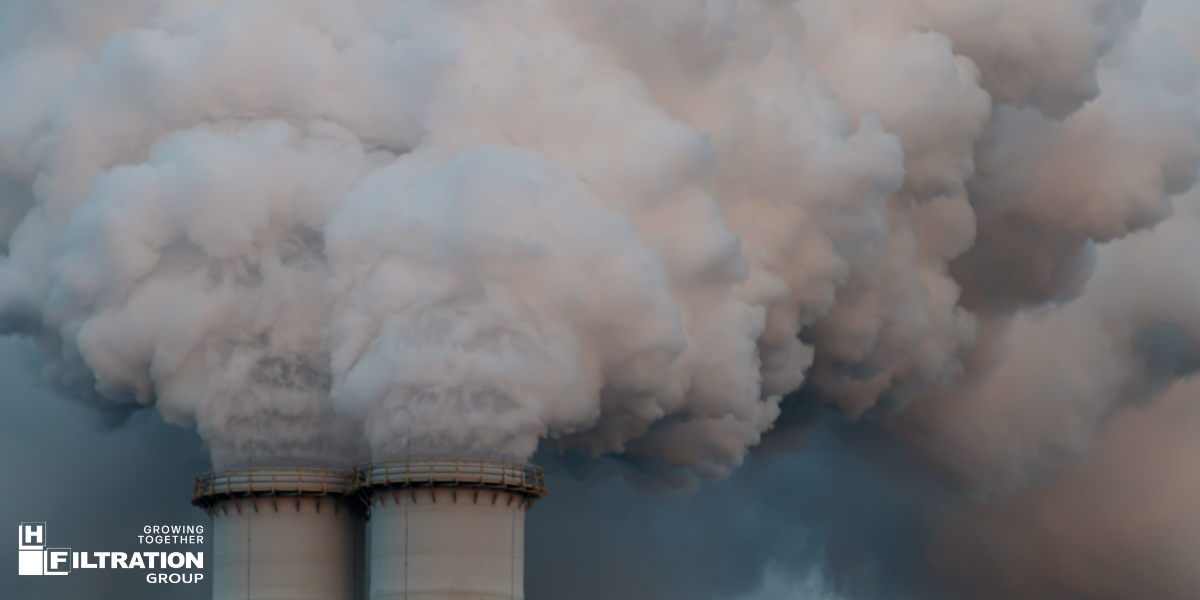Now more than ever, it is essential to consider effective abatement systems for volatile organic compounds.
In the modern era, industry plays a key role in economic development. However, this progress is often accompanied by a growing concern about the environmental impact of industrial activities. Among the main concerns is the emission of volatile organic compounds (VOCs).
Abatement of VOCs has become a crucial issue for modern industry and a central point for ensuring sustainable and responsible development.
What are volatile organic compounds and how are they formed?
Volatile organic compounds (VOCs) are a large class of chemicals that contain carbon and hydrogen atoms and can vaporize at room temperature.
These compounds can come from a variety of sources, both natural and man-made. Natural sources of VOCs include plants, wet soils and animals. However, the largest source of VOCs is human activities, including industry, agriculture, transportation and consumer activities.
Chemical industries, factories and manufacturing processes release a wide range of VOCs into the atmosphere. These compounds can be emitted directly into the air or result from uncontrolled chemical reactions between other chemicals in the atmosphere.
What are the effects of VOCs on the environment and health?
Volatile organic compounds can have harmful effects on the environment and human health.
When released into the atmosphere, these compounds can react with other air pollutants, such as nitrogen oxides, to form tropospheric ozone. Tropospheric ozone is a potent air pollutant that can cause respiratory problems, damage crops, and adversely affect the ecosystem.
In addition, VOCs can contribute to the formation of photochemical smog, a thick, brown haze that forms in many urban and industrial areas. Smog can irritate the eyes, nose and throat, cause respiratory problems and worsen health conditions for people with pre-existing respiratory diseases.
As for human health, exposure to VOCs can cause a range of problems, such as headaches, eye, skin and respiratory tract irritation. Some are also known to cause more serious effects, such as damage to internal organs, damage to the central nervous system and increase the risk of developing respiratory and heart disease.
Some also are classified as carcinogens and may increase the risk of developing cancer.
HFiltration VOC Abatement Systems
All this makes it vital to adopt effective abatement systems to reduce emissions of these compounds and protect the environment and people's health.
To address these issues, the industry has committed to implementing advanced and efficient VOC abatement systems. HFiltration, an expert in the field, offers a full range of abatement systems, each designed to treat specific types of emissions.
Biofilters: devices that harness the action of bacteria and microorganisms to convert VOCs into less
Scrubber Wash Towers: use chemically reactive liquids to remove VOCs from the air.
Thermal Oxidizers: abatement devices that use high temperatures to thermally oxidize VOCs.
Activated Carbon Filters: use the ability of activated carbon to absorb VOCs.
Abatement of volatile organic compounds is essential for modern industry, as it reduces environmental impact and protects public health. By using advanced and efficient technologies such as HFiltration's, industry can ensure sustainable and responsible development, helping to preserve our planet for future generations.
Want to know more about VOC abatement systems?



